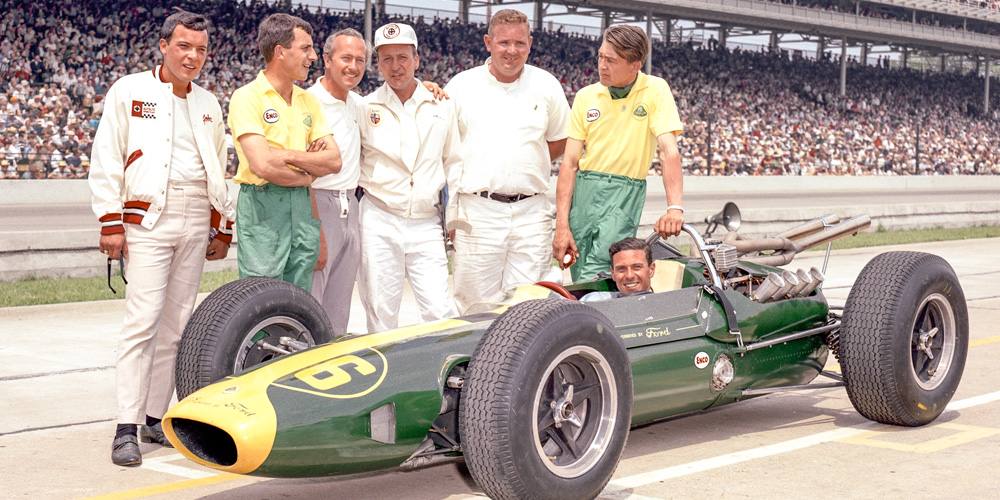When the Month of May arrived in 1964, the rear-engine revolution was well underway at the Indianapolis Motor Speedway.
The roadster era of the 1950s and early 60s featured simple, elegant designs with the engine in front of the driver, cherished machines created by legendary builders such as A.J. Watson, George Bignotti, Quin Epperly and Frank Kurtis. Those cars had won every Indianapolis 500 from 1950 through 1963, but their days appeared to be numbered in May 1964.
Rear-engine cars had made the starting field in the 1930s but were unsuccessful and seen as oddities. Momentum for the shift toward rear-engine cars started in 1961, when two-time Formula One World Champion Jack Brabham finished ninth, on the lead lap, in his tiny rear-engine Cooper Climax.
In 1964, reigning Formula One World Champion Jim Clark won the Indy 500 pole in a rear-engine Lotus designed by Colin Chapman at a record speed of 158.828 mph. Bobby Marshman qualified second in a Lotus-Ford rear-engine car, with Rodger Ward the top-qualifying roadster driver in third in a Watson-Ford.

Clark led the first six laps, staying in front of the tragic crash on Lap 2 that claimed the lives on Dave MacDonald and Eddie Sachs. Clark surrendered the lead to Marshman on Lap 7.
Marshman drove a low line around the Speedway’s turns during the race, bottoming the car and causing an oil leak that forced his withdrawal after while leading on Lap 39.
Clark regained the lead on Lap 40 and led until Lap 47, when he was forced to withdraw with a broken suspension due to excessive wear of his Dunlop tires.
1963 winner Parnelli Jones took the lead after Clark’s withdrawal, the first roadster driver out front all day. But Foyt, who started fifth, passed Jones on Lap 55 in his Watson-Offy roadster and led the rest of the way for his second Indianapolis 500 victory. He beat Ward to the finish by one minute, 24.35 seconds.
That was the last victory by a front-engine car in the Indianapolis 500. Clark won in 1965 in a Lotus-Ford, and by 1969, the entire starting field was comprised of rear-engine cars.










